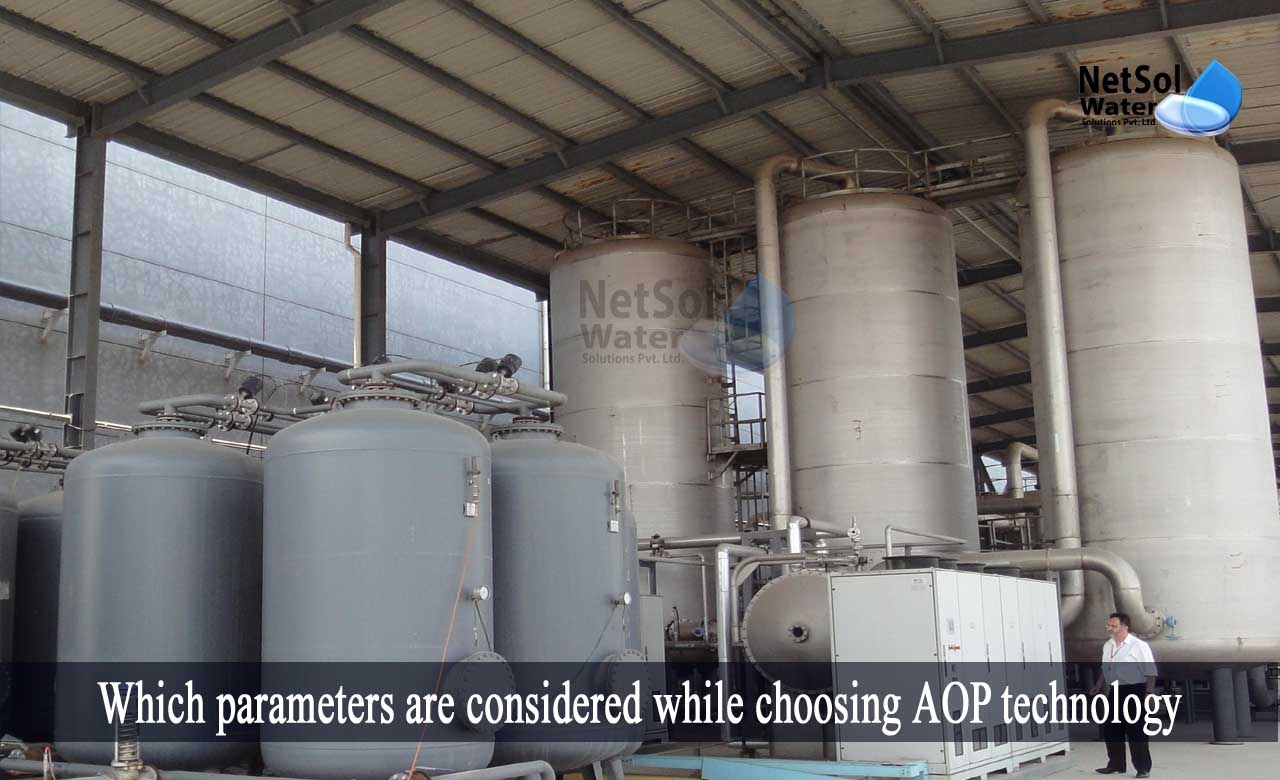Introduction
Options for water and wastewater treatment are evaluated, based on the quality of water to be treated. AOP systems, for example, are designed to specifically target specific contaminants, and remove or reduce them from the water. This occurs due to the power of chemical reactions.
In this blog, we will discuss about some of the key water quality parameters to consider, when selecting AOP systems for your water treatment applications. These can be used in drinking water or wastewater treatment.
Which parameters are considered while choosing AOP technology?
Advanced oxidation process (AOP) is a water treatment process that treats water, in the tertiary stage of an integrated water treatment system, by using the chemical reaction of oxidation. The goal is to significantly reduce micropollutants that escaped from the primary and secondary stages.
Parameters to consider while choosing advanced oxidation technology
A list of some of the key water quality parameters to consider when selecting AOP systems is provided below.
· Scavengers of hydroxyl radicals
As the driving force behind the AOP process, hydroxyl radicals (OH) must be produced and maintained, at levels sufficient for treatment.
Some compounds, however, have an affinity for OH and will react with these molecules before the target pollutants. This reduces the rate of treatment completion.
· Bromide
Bromides are particularly problematic in ozone-based AOP systems. Aside from being OH scavengers, they have the potential to form bromate in the presence of ozone (BrO3–). Bromate has been linked to cancer. To avoid this, either something must be done to the bromide ions prior to oxidation, or other chemicals must be added to discourage bromate formation.
· Natural Organic Matter
Natural organic matter (NOM) refers to the dissolved organic materials in effluent. They, like other scavengers, react with OH and reduce the system's reaction rate by using up the radicals, required to oxidize the target pollutants.However, they can also act as UV light blockers, reducing its ability to react with the oxidizing agent, and preventing proper formation of OH radicals.
· Carbonates/Bicarbonates
These are compounds that react with OH radicals to produce other oxidizing agents, resulting in a chain of oxidation reactions that reduces the advanced oxidation process's reaction rate, and efficiency.
· Nitrite/nitrates
In the presence of UV radiation, nitrate (NO3-) can be converted to nitrite (NO2-). As a result, in the case of advanced oxidation, radiation absorption by nitrate can impede UV processes. Therefore, its availability to react with the oxidizing agent is reduced. Nitrates, when reduced to nitrite, become an OH scavenger, lowering the reaction efficiency and removal rate of AOP systems.
· pH
The overall concentration of the OH radical can be determined by how acidic or basic the effluent is. At certain pH levels, the presence of a few specific compounds that affect the formation, and use of hydroxyl radicals is increased. Carbonates and bicarbonates, which are hydroxyl radical scavengers, are abundant at higher pH levels.
At higher pH levels, the presence of hydroxide and hydrogen peroxide ions is also increased. These can boost OH production in ozone and peroxide-based solutions.
· Temperature
The impact of temperature on AOP systems is divided into two categories. On the one hand, if ozone is used as an oxidizing agent, higher temperatures reduce its solubility. Increased temperature, on the other hand, accelerates the reaction rates.
· Solids
The turbidity of the effluent in the AOP systems may be higher than desired, if primary and secondary processes are not effective. The absorption of UV radiation by the oxidizing compounds is hampered, at higher levels of turbidity.
Conclusion
Some of these water quality parameters have a direct impact on the presence and response of other parameters. As a result, it is frequently necessary to strike a balance between adjusting effluent aspects to improve reactivity and efficiency, and adjusting them to reduce unwanted constituents.
Some of the hydroxyl scavengers can be dealt with by adjusting the pH or temperature, but this may reduce the process's efficiency. Their ability to reduce reaction rates can also be hampered, by the addition of other chemicals that intercept them, before they come into contact with the OH radical.
Netsol Water is Greater Noida-based leading water & wastewater treatment plant manufacturer. We are industry's most demanding company based on client review and work quality. We are known as best commercial RO plant manufacturers, industrial RO plant manufacturer, sewage treatment plant manufacturer, Water Softener Plant Manufacturers and effluent treatment plant manufacturers. Apart from this 24x7 customer support is our USP. Call on +91-9650608473, or write us at enquiry@netsolwater.com for any support, inquiry or product-purchase related query.



